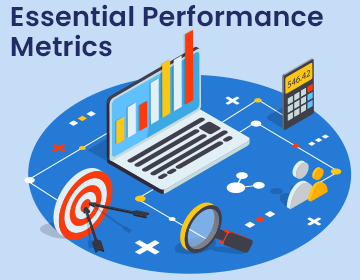Unlocking Billing Analytics: A Guide to Data-Driven Process Improvement
Share This Article

When law firms implement automated billing solutions, the initial focus is often on streamlining operations and reducing manual effort. However, the analytics capabilities that come with automation offer equally powerful opportunities to transform how firms understand and optimize their billing processes. This guide explores how to leverage these capabilities for meaningful process improvement and better financial performance.
Understanding Your Billing Lifecycle
The billing lifecycle in a law firm follows a predictable pattern of Proforma, but understanding its nuances is key to improvement. A typical workflow starts with proforma generation on the second business day of the month, followed by attorney review, necessary approvals, billing coordinator processing, and invoice creation.
What makes this process complex isn’t just the steps involved but the various stakeholders and decision points along the way. For example, attorneys may need to:
- Review and edit time entries
- Make decisions about billing timing
- Get input from colleagues
- Submit items for write-off approval
- Delegate review to legal administrative assistants
- Coordinate with billing staff
Each interaction represents both a potential bottleneck and an opportunity for optimization. The key is having visibility into how long each stage takes and where delays typically occur. Modern analytics platforms can track each proforma from generation through final invoice creation, providing insights into:
- Current status and location
- Time spent at each stage
- Approval requirements and status
- Expected completion timeline
- Potential bottlenecks
Essential Performance Metrics
When it comes to measuring billing process performance, several key metrics stand out:
Submission Time Tracking
- Time from proforma generation to attorney submission
- Processing time for billing coordinators
- Total cycle time from generation to invoice creation
- Comparison of processing times across practice groups and offices
Write-off Analysis
- Write-off amounts at client and matter levels
- Frequency of write-off approvals needed
- Time spent in approval workflows
- Patterns in write-off decisions
For example, a typical approval workflow might require:
- Practice group leader review for amounts exceeding 15% of fees
- Finance committee approval for higher thresholds
- Multiple approver sign-off for significant amounts
Analytics can help optimize these thresholds and approval chains by showing the impact on billing velocity versus risk management benefits.
Billing Decisions
- Rate of “do not bill” selections
- Consecutive holds on specific matters
- Reasons for billing delays
- Impact on cash flow
A particularly valuable insight comes from tracking matters that are repeatedly held from billing. For instance, if the same matter is marked “do not bill” for three consecutive months, the system can automatically alert finance leadership to investigate potential underlying issues or reasons for the delay in billing.
Resource Utilization
- Workload distribution among billing staff
- Attorney response times
- Delegate user activity
- Support staff efficiency
- Processing time variations by matter type
Using Analytics for Process Improvement
The real value of billing analytics comes from using the data to drive concrete improvements. Here are key approaches:
Comparative Analysis
Look at performance across different dimensions:
- Individual attorneys within practice groups
- Practice groups across office locations
- Month-over-month trending
- Year-over-year comparisons
For example, by analyzing processing times across practice groups, firms might discover that certain transactional practices consistently achieve faster billing cycles than complex litigation matters. This insight can guide process optimization efforts and resource allocation decisions.
What-If Analysis
Once you have historical data, you can model potential improvements:
- Impact of reducing review time by X days on cash flow
- Effect of streamlined approval processes on billing velocity
- Potential gains from workload rebalancing
- ROI of additional billing support staff
Workflow Optimization
Use analytics to identify and address specific process challenges:
- Bottlenecks in approval chains
- Underutilized delegate resources
- Training needs based on performance patterns
- Resource allocation opportunities
Leveraging Power BI for Better Insights
Modern billing analytics platforms leverage Microsoft Power BI to provide standard and customizable reporting capabilities. This approach offers several advantages:
Standard Capabilities
- Pre-built dashboards for common metrics
- Real-time process monitoring
- Drill-down capabilities for detailed analysis
- Automated report distribution
- Mobile access to key metrics
Customization Options
- Ability to add new metrics as needed
- Integration with other firm data sources
- Flexible visualization options
- User-specific views and permissions
- Custom alert configurations
Security and Access
- Role-based access controls
- Secure data handling
- Audit trail capabilities
- Compliance with firm security policies
- Integration with firm authentication systems
Performance Management
Set clear metrics and targets:
- Proforma return rates within the deadline (targeting 90%+ compliance)
- Average processing time per proforma
- Write-off approval cycle times
- Number of proformas processed per billing coordinator
- Percentage of proformas requiring multiple approval cycles
These metrics can be compared across:
- Individual attorneys and practice groups
- Office locations
- Time periods
- Matter types
- Client categories
This data becomes particularly valuable during annual performance reviews and resource allocation decisions.
Looking Ahead: Future Analytics Capabilities
As billing analytics platforms evolve, firms can expect to see:
- Enhanced AI-powered insights
- Predictive analytics for billing outcomes
- Deeper integration with firm systems
- Advanced visualization capabilities
- Automated improvement recommendations
Moving Forward: Your Next Steps
While automating your billing process delivers immediate efficiency gains, the real transformation comes from leveraging the analytics capabilities to drive continuous improvement. The key is starting with clear objectives and building momentum through early wins.
Consider beginning with these practical steps:
- Map your current billing lifecycle and identify where you most need visibility
- Define 2-3 key metrics that would have the biggest impact on your firm’s goals
- Identify a pilot group that represents different practice areas and user types
- Set realistic timelines for implementation and measurement
Remember, your initial analytics implementation doesn’t need to be comprehensive. Start with the metrics that matter most to your firm, get comfortable with their insights, and expand from there. The goal is steady progress toward a more data-driven billing process.
Optimize Your Firm’s Billing with Datolite Rocket
Datolite Rocket simplifies proforma and prebill review, giving law firms greater visibility, efficiency, and control over their billing operations.
Explore how Datolite Rocket can help:
- Improve accuracy and reduce manual effort
- Accelerate billing cycles and cash flow
- Gain actionable insights to optimize operations
Ready to modernize your firm’s billing? Contact us today.
About the Author
Jim Lafferty is the Director of Paperless Billing Solutions at Datolite Solutions, where he helps law firms improve their billing processes with better technology. He works with firms to move from manual to automated billing, making the transition smoother and easier for staff to adopt.
Connect with Jim on LinkedIn.





